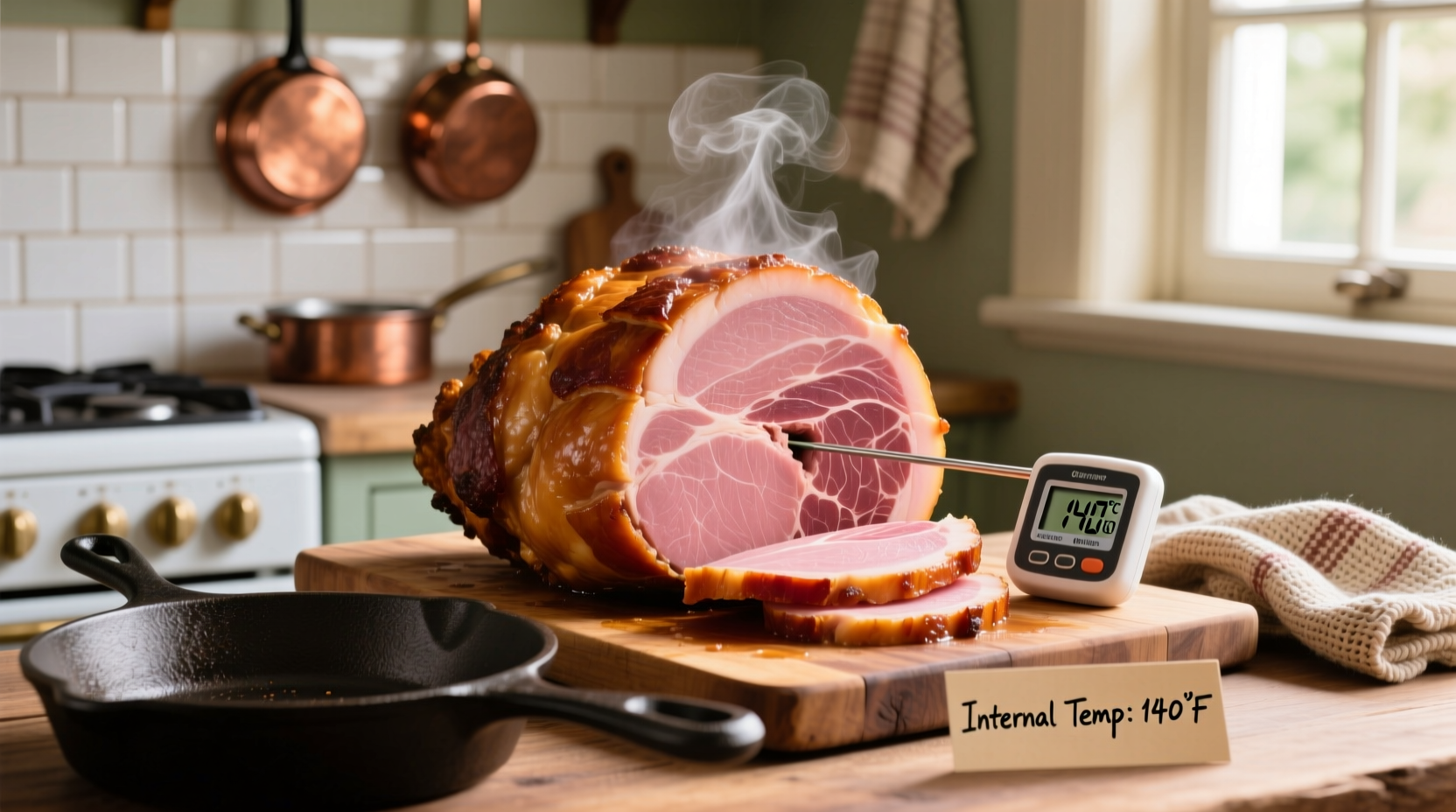Understanding Your Cured Ham Type Before Cooking
Not all hams are created equal. Cured hams come in several varieties that significantly impact cooking time and method:
- City hams (wet-cured): Most common in supermarkets, fully cooked and ready to eat
- Country hams (dry-cured): Require soaking before cooking due to higher salt content
- Smoked hams: May be fully or partially cooked depending on packaging
Always check your ham's label for phrases like "fully cooked," "cook before eating," or "ready to eat." The USDA Food Safety and Inspection Service confirms that most cured hams sold in the United States are fully cooked and only require reheating.
| Ham Weight | Approximate Cooking Time | Internal Temperature |
|---|---|---|
| 5-7 lbs | 1 hour 15 min - 2 hours | 140°F (60°C) |
| 8-10 lbs | 2 - 2.5 hours | 140°F (60°C) |
| 11-14 lbs | 2.5 - 3.5 hours | 140°F (60°C) |
Step-by-Step Cooking Process for Perfect Results
Follow this professional technique to achieve moist, flavorful ham every time:
- Preparation: Remove ham from refrigerator 30 minutes before cooking. Score the surface in a diamond pattern, being careful not to cut too deeply into the meat.
- Preheat oven to 325°F (163°C) - never lower, as this creates a food safety risk according to USDA guidelines.
- Position ham flat-side down in a roasting pan with 1-2 cups of liquid (water, broth, or apple juice).
- Cover loosely with aluminum foil to prevent excessive drying.
- Cook following the 15-18 minutes per pound guideline, removing foil during the last 20-30 minutes for glazing.
- Check temperature in the thickest part using a reliable meat thermometer.
- Rest for 15-20 minutes before carving to allow juices to redistribute.

Critical Temperature Guidelines You Must Follow
Food safety is non-negotiable when cooking cured meats. The USDA Food Safety and Inspection Service mandates specific temperature requirements:
- Reheat fully cooked hams to 140°F (60°C)
- Cook "cook before eating" hams to 145°F (63°C) with 3-minute rest time
- Never hold cooked ham between 40°F-140°F for more than 2 hours
Using an accurate digital thermometer is essential - visual cues alone cannot verify proper doneness. The National Center for Home Food Preservation emphasizes that thermometer verification prevents both undercooking risks and overcooking that leads to dry ham.
Avoid These Common Cured Ham Cooking Mistakes
Even experienced cooks make these critical errors that compromise your ham:
- Skipping the resting period - Cutting too soon releases precious juices
- Over-glazing too early - Sugar-based glazes burn when applied more than 20-30 minutes before completion
- Cooking at too high temperature - Results in tough, dry meat despite proper timing
- Not accounting for carryover cooking - Temperature rises 5-10°F after removal from oven
- Using inaccurate thermometer - Always calibrate before use
Special Considerations for Different Cooking Methods
While oven roasting produces the most consistent results, alternative methods require specific adjustments:
- Slow cooker method: Cook on low for 4-6 hours (depending on size), but finish under broiler for caramelization
- Grill method: Use indirect heat at 325°F with a drip pan, approximately 15-20 minutes per pound
- Convection oven: Reduce temperature by 25°F and check 25% earlier than standard timing
Remember that country hams require special preparation - they must be soaked for 12-24 hours to reduce salt content before cooking, as recommended by Southern culinary experts at the University of Georgia Cooperative Extension.
Perfect Glazing Techniques for Flavor Enhancement
Apply your glaze during the final 20-30 minutes of cooking for optimal results. Popular combinations include:
- Brown sugar, Dijon mustard, and apple cider
- Pineapple juice, cloves, and honey
- Maple syrup, bourbon, and orange zest
Brush on thin layers every 5-7 minutes for maximum adhesion without burning. The natural sugars in the glaze will caramelize beautifully at the proper oven temperature.
Storage and Leftover Guidance
Properly stored, cooked ham maintains quality for:
- 3-4 days refrigerated in airtight container
- 1-2 months frozen (though quality degrades over time)
When reheating leftovers, bring to 165°F (74°C) internal temperature to ensure safety. The USDA recommends using shallow containers for rapid, even reheating.











 浙公网安备
33010002000092号
浙公网安备
33010002000092号 浙B2-20120091-4
浙B2-20120091-4